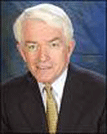2006
Year That Was
The
rapid pace of globalization has been reshaping the U.S. shipper community
for some time now.
But 2006 was in many ways a landmark year
for new collective strategies and cooperation.
As recently as last November, for example,
The National Industrial Transportation League (NITL) and the Transportation
Intermediaries Association (TIA) announced an agreement on a model shipper-3PL
contract.
The “Shipper-3PL Model Contract”
comports with the recently adopted
Shipper-Carrier Model Contract developed
by the NITL and the American Trucking Associations (ATA). The Shipper-3PL
Model Contract will also comport with the expected 3PL-Carrier Model Contract
which is being developed by TIA and ATA.
“This effort points out the importance
of collaboration in the transportation industry.
It is a natural next step from our efforts
with the ATA to develop an agreement that provides the backdrop for the
commercial relationship between shippers and 3PLs,” said John Ficker,
NITL President and CEO.
The National Retail Federation, meanwhile,
continues to extend its reach as world's largest retail trade association.
Currently, its membership comprises all
retail formats and channels of distribution including department, specialty,
discount, catalog, Internet, independent stores, chain restaurants, drug
stores and grocery stores as well as the industry's key trading partners
of retail goods and services.
In order to better serve its constituents
during the peak shipping seasons, the NRF has partnered with Global Insight
Inc.
This privately held company provides exclusive
economic intelligence through a variety of forecasting tools.
“It’s slow season now, but we’re
still expecting growth,” Global Insight Economist Paul Bingham said.
“Even as volume trails off over the winter, we’ll still see
an increase in volume when compared to the same month a year ago.
In the meantime, the truck and rail systems
are now improving performance following the peak months.
Collaboration between nations and economic
zones was also last year’s theme for The U.S. Chamber of Commerce,
which encouraged U.S. Treasury Secretary Henry Paulson and Chinese Vice
Premier Wu Yi to build on the candid, constructive talks held in Beijing
as part of the first Strategic Economic Dialogue (SED).
 “The
opening round of this Dialogue is an important first step in tackling
critical issues in our bilateral relationship,” said Chamber president
and CEO Tom Donohue (right). “The
opening round of this Dialogue is an important first step in tackling
critical issues in our bilateral relationship,” said Chamber president
and CEO Tom Donohue (right).
“We look forward to the second round
in May in Washington and strongly encourage both sides to use the Dialogue
to produce tangible, measurable results.”
The Chamber believes the Dialogue can be
an effective means of addressing issues like exchange rate flexibility,
intellectual property rights protection, investment, the further opening
of Chinese markets to American products and services, increasing the role
of consumption in the Chinese economy, energy security, and providing
health care and a social safety net for aging populations.
“This Dialogue, at the highest levels
of the U.S. and Chinese governments, is the best opportunity for both
sides to aid China's successful integration into the global economy,”
said Donohue.
“We are encouraged that significant
efforts are underway to address the important and challenging issues in
this relationship.
But, at the end of the day, it's results that count.”
 The U.S. National Association of Manufacturers
was focused on a different kind of “dialogue,” with its president
John Engler (left) offering praise and gratitude to the 109th Congress.
The U.S. National Association of Manufacturers
was focused on a different kind of “dialogue,” with its president
John Engler (left) offering praise and gratitude to the 109th Congress.
“In their final hours, members of
the 109th provided America’s manufacturers a legislative shot in
the arm, enacting important measures we have sought for the past two years,”
Engler said.
Engler endorsed a number of key trade initiatives,
including the Miscellaneous Tariff Bill (MTB), the Generalize System of
Preferences (GSP), the Andean Trade Preferences Act (ATPA) and Permanent
Normal Trade Relations for Vietnam.
“These are all critical trade programs
for U.S. manufacturers and our trade partners in the development world,”
he said.
“By sending the President legislation
that increases our economic security and strengthens our competitiveness
in the global marketplace, Congress has helped level the playing field
for manufacturers,” Engler said.
“This legislation is good for business
and consumers.”
Patrick Burnson
|



